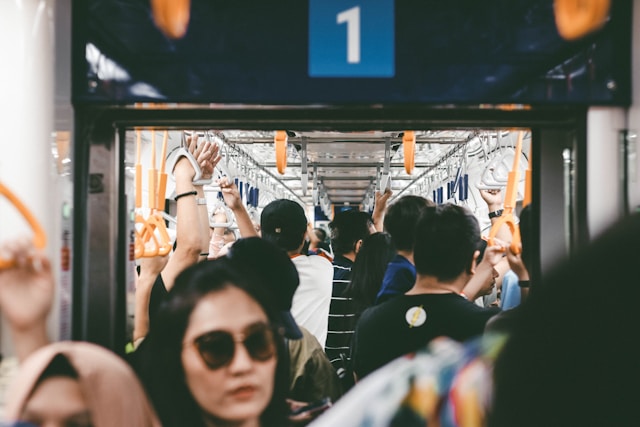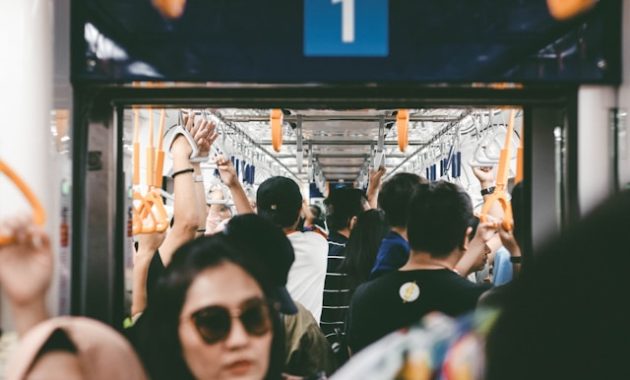
As Jakarta continues to grow as Indonesia’s vibrant capital, the importance of sustainability and environmental consciousness becomes more essential than ever. Despite its challenges, the city has made significant strides in fostering eco-friendly practices and creating green spaces that improve quality of life. From sustainable architecture to serene parks and environmental programs, Jakarta offers a variety of places for eco-conscious residents and visitors alike. In this article, we’ll explore some of the top sustainable spots and green initiatives in Jakarta that contribute to a healthier environment and promote a sustainable future.
Why Sustainability Matters in Jakarta
Jakarta, with its dense urban landscape, faces numerous environmental challenges, including pollution, traffic congestion, and limited green spaces. The city’s high population density and rapid urbanization have prompted the need for sustainable development. In recent years, Jakarta’s government and various organizations have taken steps to combat environmental issues through sustainable urban planning, green spaces, and eco-friendly initiatives. These efforts aim to reduce carbon emissions, improve air quality, and enhance the overall quality of life for Jakarta’s residents.
1. Taman Suropati – A Green Oasis in Central Jakarta
Taman Suropati, located in the heart of Menteng, is one of Jakarta’s oldest and most cherished parks. This beautiful green space provides a serene environment with lush trees, artistic sculptures, and pathways perfect for leisurely strolls. It is an ideal spot for relaxation, picnics, and outdoor exercise. Taman Suropati is not just a park; it is a symbol of urban green conservation and environmental awareness in Jakarta.
The park is also a hub for local art and culture, as it hosts various events and art installations that promote sustainable practices. Taman Suropati’s dedication to environmental sustainability makes it a standout example of a successful urban green space in a bustling metropolis.
2. Pluit Reservoir – Revitalization of Jakarta’s Waterways
The Pluit Reservoir is an inspiring example of an environmental transformation in Jakarta. Once heavily polluted, the reservoir underwent a significant cleanup initiative, transforming it into a functioning ecosystem and recreation area. This project was part of Jakarta’s broader environmental mission to restore its rivers and reservoirs, which play a crucial role in flood control and water management.
Today, Pluit Reservoir is not only an essential water management resource but also a popular spot for recreation and environmental education. The site includes walking trails, green spaces, and seating areas, providing a peaceful retreat for visitors. Its revitalization serves as a model of how neglected urban areas can be reclaimed for sustainable, community-friendly purposes.
3. Car-Free Days – Reducing Carbon Emissions in Jakarta
Jakarta’s Car-Free Days, held every Sunday along the main thoroughfares, represent a significant step towards reducing air pollution and promoting sustainable transportation. By temporarily halting car traffic, these events allow residents to enjoy clean air and peaceful streets while engaging in activities like cycling, running, and socializing.
The initiative not only lowers carbon emissions but also raises awareness about the importance of sustainable transport options. Car-Free Days encourage people to explore eco-friendly alternatives like cycling, public transport, and walking, thereby contributing to a reduction in the city’s overall carbon footprint.
4. Ragunan Zoo – A Model of Conservation and Eco-Tourism
Ragunan Zoo, one of Southeast Asia’s largest zoos, stands out as an eco-friendly destination committed to wildlife conservation and environmental education. Spanning over 185 hectares, Ragunan Zoo is a vital green lung for Jakarta and is home to hundreds of plant and animal species, including endangered native species.
The zoo’s mission extends beyond entertainment; it plays an essential role in conserving biodiversity and educating visitors about Indonesia’s unique ecosystems. The zoo’s sustainable practices, including waste management and habitat preservation, make it a noteworthy destination for eco-tourists and conservationists.
5. Jakarta Green Building Initiative – Eco-Friendly Architecture
To address the environmental impact of buildings, Jakarta introduced the Green Building Initiative, a set of guidelines and standards for eco-friendly construction. This initiative promotes the use of energy-efficient designs, sustainable materials, and water-saving technologies in both new and existing buildings. As a result, the city has seen the rise of green-certified buildings that reduce energy consumption and minimize environmental impact.
Some notable examples of green buildings in Jakarta include The Energy Building and Sequis Tower, both of which incorporate sustainable technologies such as solar panels, rainwater harvesting, and energy-efficient lighting. These buildings set an example for eco-friendly construction and inspire other businesses to adopt sustainable practices.
6. Ciliwung River Restoration – A Clean River Initiative
The Ciliwung River runs through Jakarta, and it has long been a subject of environmental concern due to pollution and poor waste management. In recent years, efforts have been made to restore and clean the river through the Ciliwung River Restoration project. This project aims to reduce pollution, prevent flooding, and create a cleaner river environment for local communities.
Local organizations, alongside government efforts, have initiated programs to clean up the river, plant trees along its banks, and educate residents on waste management. The Ciliwung River Restoration not only improves the river’s health but also increases public awareness about the importance of clean waterways in urban areas.
7. Urban Farming – Growing Food in the City
Urban farming is gaining popularity in Jakarta as a way to promote sustainability and provide access to fresh produce. This movement encourages residents to cultivate small gardens on their rooftops, balconies, and community spaces. Urban farming not only provides a source of fresh food but also reduces the environmental impact of transporting produce from rural farms.
One notable urban farming initiative is Jakarta Berkebun (Jakarta Gardening), a community-driven project that encourages citizens to grow their own vegetables and herbs. This initiative promotes healthy eating, reduces reliance on imported food, and fosters a sense of community among participants.
8. MRT Jakarta – A Sustainable Transit Solution

As one of Southeast Asia’s newest and most modern public transportation systems, MRT Jakarta has revolutionized the way people commute in the city. The MRT is a clean, efficient, and eco-friendly mode of transport that reduces the need for personal vehicles, thereby decreasing road congestion and emissions. The MRT’s design and operation are centered on sustainability and energy efficiency, making it an essential part of Jakarta’s sustainable infrastructure.
The MRT system not only improves mobility but also aligns with Jakarta’s broader environmental goals by encouraging public transportation over private vehicles. This reduces the city’s overall carbon footprint and sets a new standard for sustainable transport in Indonesia.
9. Community Recycling Programs – Encouraging Waste Reduction
Recycling is a critical component of Jakarta’s sustainability efforts. Community-based recycling programs have been established to encourage residents to separate and recycle their waste. These programs involve educational workshops on waste management and offer recycling facilities in residential areas.
One prominent initiative is Bank Sampah Indonesia (Indonesia Waste Bank), which operates as a community recycling center where people can deposit recyclable materials in exchange for points or small payments. This program not only promotes recycling but also provides a source of income for residents, fostering both environmental and social benefits.
10. Thousand Islands – Eco-Tourism and Marine Conservation
Located just north of Jakarta, the Thousand Islands are a popular destination for eco-tourism and marine conservation. These islands offer pristine beaches, coral reefs, and marine biodiversity that attract eco-conscious travelers. Efforts to preserve the islands’ natural beauty include restrictions on fishing, sustainable tourism practices, and marine conservation projects.
The Thousand Islands are an example of how tourism can be sustainable and benefit local communities. Visitors to the islands are encouraged to minimize waste, respect marine life, and participate in conservation activities. This approach helps maintain the ecological health of the islands while providing economic benefits to the local population.